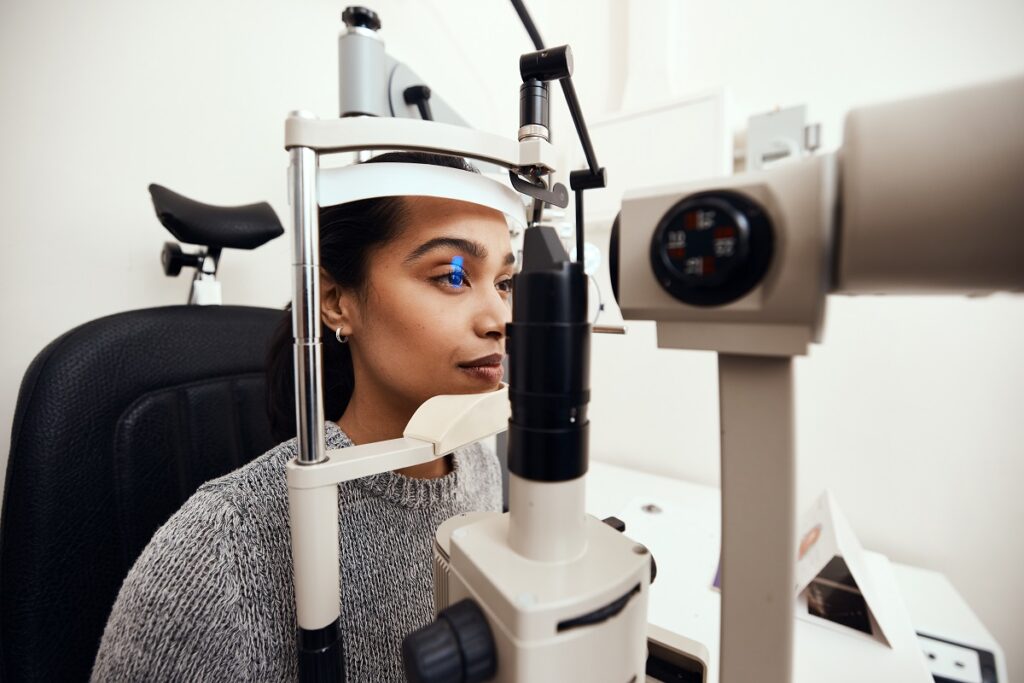Discover Advanced Solutions at Opticore Optometry for Eye Health
Discover Advanced Solutions at Opticore Optometry for Eye Health
Blog Article
Exploring the Most Recent Technological Advancements in Optometry and What They Mean for Optometrists
From the precision of Optical Coherence Tomography to the nuanced understandings offered by AI-driven diagnostic tools, these technologies are establishing new requirements in individual evaluation and therapy. As these advancements permeate the practice, eye doctors are encountered with the difficulty of accepting these devices to boost person outcomes.
Technologies in Diagnostic Tools
Advancing the field of optometry, innovations in diagnostic devices have transformed the way eye care professionals evaluate and identify visual impairments and eye problems. The previous years has actually witnessed substantial technological developments, making it possible for even more exact and thorough analyses.
An additional key advancement is the introduction of sophisticated corneal topography systems, which map the surface area curvature of the cornea with accuracy. These tools are particularly helpful for fitting get in touch with lenses and detecting corneal conditions. Additionally, electronic retinal imaging has transformed traditional ophthalmoscopy, providing comprehensive, scenic views of the retina that help with extensive aesthetic assessments.
The development of wavefront aberrometry has actually also been essential, enabling the analysis of refractive errors with unrivaled precision (Opticore Optometry). This innovation aids in tailoring restorative lenses and enhancing medical results for refractive surgical treatments. Jointly, these diagnostic improvements empower eye doctors to supply superior patient care, making sure early intervention and customized therapy techniques, eventually enhancing aesthetic health outcomes
AI in Individual Monitoring
Structure on the foundation of sophisticated diagnostic devices, the unification of artificial intelligence (AI) in individual monitoring represents a transformative leap for optometry. AI systems are increasingly used to enhance efficiency, accuracy, and personalization in patient care.
Furthermore, AI-driven systems facilitate streamlined patient interactions and administrative processes. Automated organizing, digital assessments, and individualized follow-up plans not just enhance individual contentment yet also maximize time management for practitioners. These systems can triage individuals based upon the necessity of their problems, ensuring that those in important need get punctual focus.
Furthermore, AI boosts decision-making by giving optometrists with evidence-based referrals and treatment paths. By integrating information from digital wellness records, AI tools offer insights that inform scientific choices, minimizing the risk of errors and enhancing person end results. As AI remains to evolve, its role in patient administration will likely broaden, improving the landscape of optometric treatment.
Advances in Retinal Imaging
In the realm of optometry, retinal imaging has experienced exceptional technical developments that are boosting diagnostic capacities and individual care. Technologies such as Optical Coherence Tomography (OCT) and fundus photography have actually reinvented exactly how optometrists imagine and evaluate the retina. OCT, particularly, offers high-resolution, cross-sectional pictures of the retina, permitting for the in-depth evaluation of its layers. This capability is vital for very early detection and management learn the facts here now of conditions like glaucoma, diabetic person retinopathy, and age-related macular deterioration.
Boosted imaging methods like OCT angiography are additional refining analysis accuracy. Eye Doctor Optometrist. Such improvements promote the recognition of minute retinal changes that might indicate illness development.
Additionally, advancements in expert system are augmenting retinal imaging by making it possible for automated analysis of big datasets. These systems help optometrists in recognizing patterns indicative of pathology, therefore enhancing diagnostic accuracy and effectiveness. Jointly, these technologies are transforming retinal imaging into a foundation of modern eye treatment, improving results and expanding restorative possibilities.
Teleoptometry's Growing Function
Teleoptometry is significantly ending up being a vital part of eye care, driven by improvements in digital communication and diagnostic devices. This is especially beneficial in underserved and country locations where accessibility to specialized eye care is frequently restricted.
The assimilation of fabricated knowledge (AI) more enhances teleoptometry, enabling the analysis of aesthetic data and assisting in the detection of ocular problems such as glaucoma and diabetic person retinopathy. AI-powered algorithms can rapidly analyze complicated imaging data, giving optometrists with important insights that bolster scientific decision-making.
In addition, teleoptometry supports continuity of treatment with seamless integration with electronic health and wellness documents (EHRs), permitting optometrists to preserve extensive patient backgrounds. When seeking advice from with various professionals., this makes sure that patients obtain tailored and consistent treatment also.
In spite of these benefits, obstacles remain, consisting of making certain data safety and security and websites handling patient expectations. Nonetheless, teleoptometry represents a considerable stride towards more accessible, reliable, and patient-centered eye care. As modern technology develops, its role is poised to expand even more.

Future Fads in Eye Care
A myriad of innovative patterns is established to improve the future of eye treatment, driven by technological improvements and the progressing demands of patients. One substantial pattern is the combination of man-made knowledge (AI) in diagnostics, which assures to improve the precision and effectiveness of eye evaluations. AI algorithms can evaluate substantial amounts of information from retinal pictures, potentially spotting conditions like diabetic retinopathy and glaucoma earlier than conventional techniques.
Furthermore, personalized medicine is getting traction in optometry, with hereditary screening notifying personalized therapy plans. This method intends to enhance patient results by tailoring treatments to specific hereditary accounts. Wearable technology, such as clever get in touch with lenses, is additionally imminent, supplying real-time monitoring of intraocular stress or glucose degrees, thus supplying continual insights right into systemic and eye wellness.
The adoption of increased truth (AR) and digital fact (VIRTUAL REALITY) in training and person education is another emerging pattern. These innovations provide immersive experiences that can improve understanding and abilities both for eye doctors and clients. As these trends evolve, optometrists need to remain abreast of technical innovations to offer advanced treatment, guaranteeing improved client outcomes and fulfillment in the vibrant landscape of eye care.
Conclusion

Collectively, these analysis developments equip eye doctors to supply remarkable patient treatment, ensuring early treatment and customized treatment strategies, ultimately boosting visual wellness end results.

As these innovations continue to advance, eye doctors have to adapt and integrate them right into practice, eventually optimizing workflow performance and boosting the criterion of eye treatment delivered to individuals.
Report this page